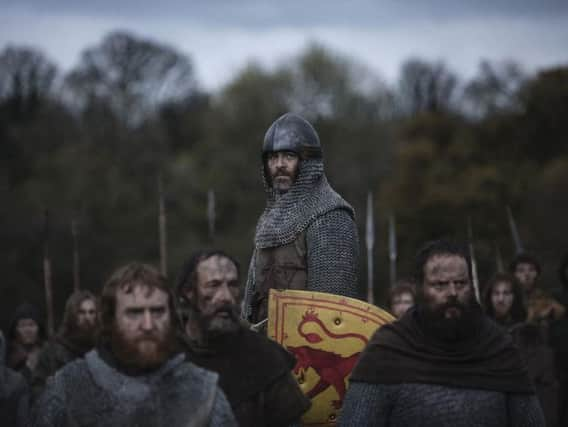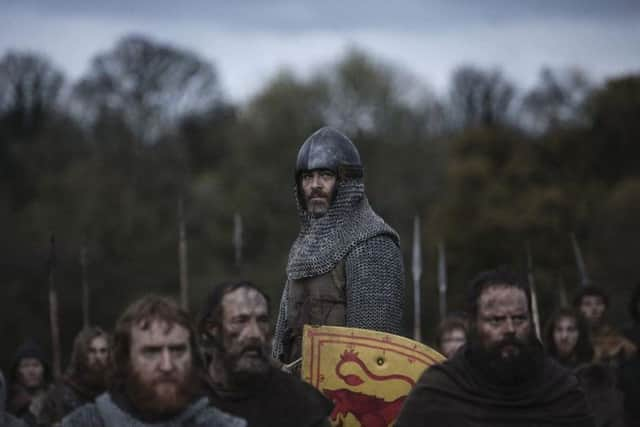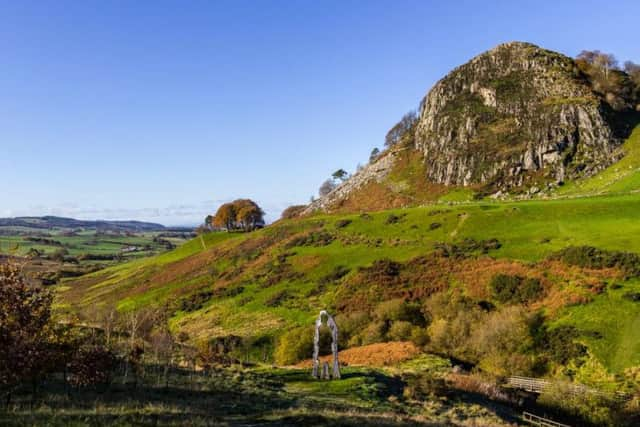What actually happened at the Battle of Loudoun Hill


On May 10, 1307, just over seven years before the symbolic conclusion of the first Scottish war of independence at Bannockburn, King Robert I of Scotland and roughly 600 men prepared to go to battle with an English force nearly five times its size.
The leader of King Edward I's army, Aymer de Valence had humiliated Robert the Bruce and his forces a year earlier at the Battle of Methven, wiping out roughly 4,000 of the Scottish king's supporters.
Advertisement
Hide AdBut a regathered, matured and battle-hardened King Robert wouldn't be humiliated for a second time at the hands of the Second Earl of Pembroke.


'The King rode out to see and chose his ground'
King Robert arrived at the foot of Loudoun Hill just a month after he had earned his first minor success en-route to Scottish independence. At Glen Trool in Galloway, Robert ambushed a band of English forces led by John Mowbray, charging down the glen's steep sides and incurring heavy losses.
At Loudoun Hill in Ayrshire Robert would again use Scotland's rugged terrain as a weapon against his rival forces.


Situtated just over ten miles east of Kilmarnock and today serving as a distinctive landmark to motorists on the A71, Loudoun Hill was selected by Robert as the meeting point for his and de Valence's forces due to a unique patch of terrain at its foot.
14th century poet John Barbour described the build up to the battle in a rhyming chronicle.
The king upon the other side,Whose prudence was his valour's guide,Rode out to see and chose his ground.The highway took its course, he found,Upon a medow, smooth and dry.But close on either side therbyA bog extended, deep and broad,That from the highway, where men rode,Was full a bowshot either side.
Advertisement
Hide AdAs portrayed in the film, Robert and his men dug out ditches ahead of de Valence's arrival; a tactic according to Traitor, Outlaw, King author Fiona Watson designed to prevent the English from "effectively encircling the Scots by fanning out across this moss."
The ditches were also laid out so that de Valence forces could only attack along a narrow highway towards enemy spears, not dissimilar to a tactic employed at the Battle of Stirling Bridge.
Advertisement
Hide AdWatson suggests that King Robert had taken inspiration for the the ditch digging from Flemish footsoldiers who had also gained an unlikely victory.
"King Robert had studied reports of the Flemish victory at Courtrai five years earlier in July 1302," she notes.
"Basically the footsoldiers, merchants, craftsmen of the great Flemish cities of Bruges, Ghent and Ypres - took on the French cavalry, digging ditches and using the terrain and won an astounding victory."
While Outlaw King correctly portrays the digging of ditches at Loudoun Hill, Watson notes that Robert's forces did not employ the use of sharpened wooden spikes.
'A grievous noise it was to hear'
When De Valence and his men did arrive - they had been travelling from Ayr to Bothwell Castle to pay Edward I's garrisons - a vicious battle ensued.
John Barbour's chronicle describes the battle as follows:
The king's men met them at the dykeSo stoutly that the most warlikeAnd strongest of them fell to the ground.Then could be heard a dreadful soundAs spears on armour rudely shattered,And cries and groans the wounded uttered.For those that first engaged in fightBattled and fought with all their might.Their shouts and cries rose loud and clear;A grievous noise it was to hear.
Advertisement
Hide AdKing Robert was in the thick of the action as portrayed in Outlaw King and Watson insists that the Scottish leader deserves full credit for tactically outwitting English forces, stating: "the most important things about King Robert as a military leader is that he looked at conditions on the day and applied whatever might seem best to them, rather than always repeating whatever had been done before."
Aymer de Valence was eventually forced to retreat and King Robert went someway to redeeming himself for the humiliation at Methven.
Edward nowhere to be seen
Advertisement
Hide AdBut what of the future King Edward II, who in Outlaw King locked horns with King Robert I on the battlefield?
While Watson is quick to credit director David McKenzie for the presentation of the battle, she notes that he was being liberal with poetic license by featuring the crown prince at the Loudoun Hill battle, but admits that his inclusion was understandable.
"He wasn't there. But without an epic fight, how the hell do you finish it off?"
